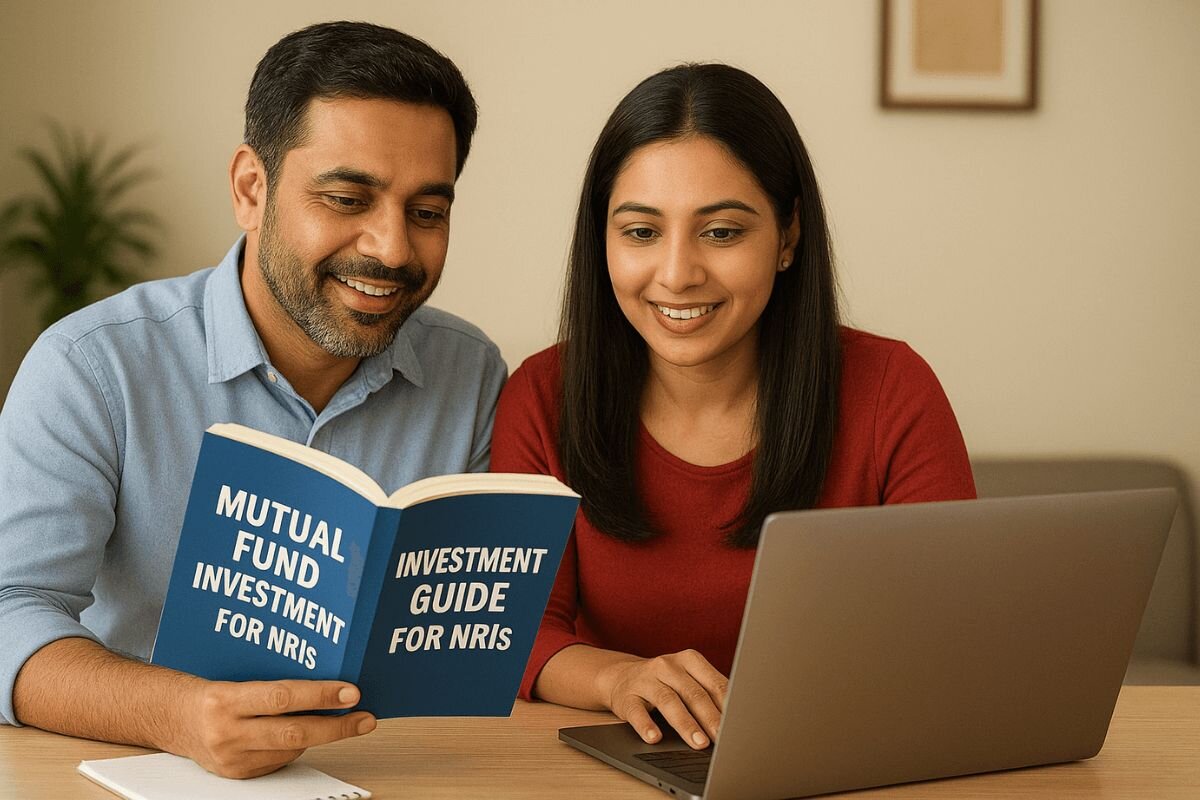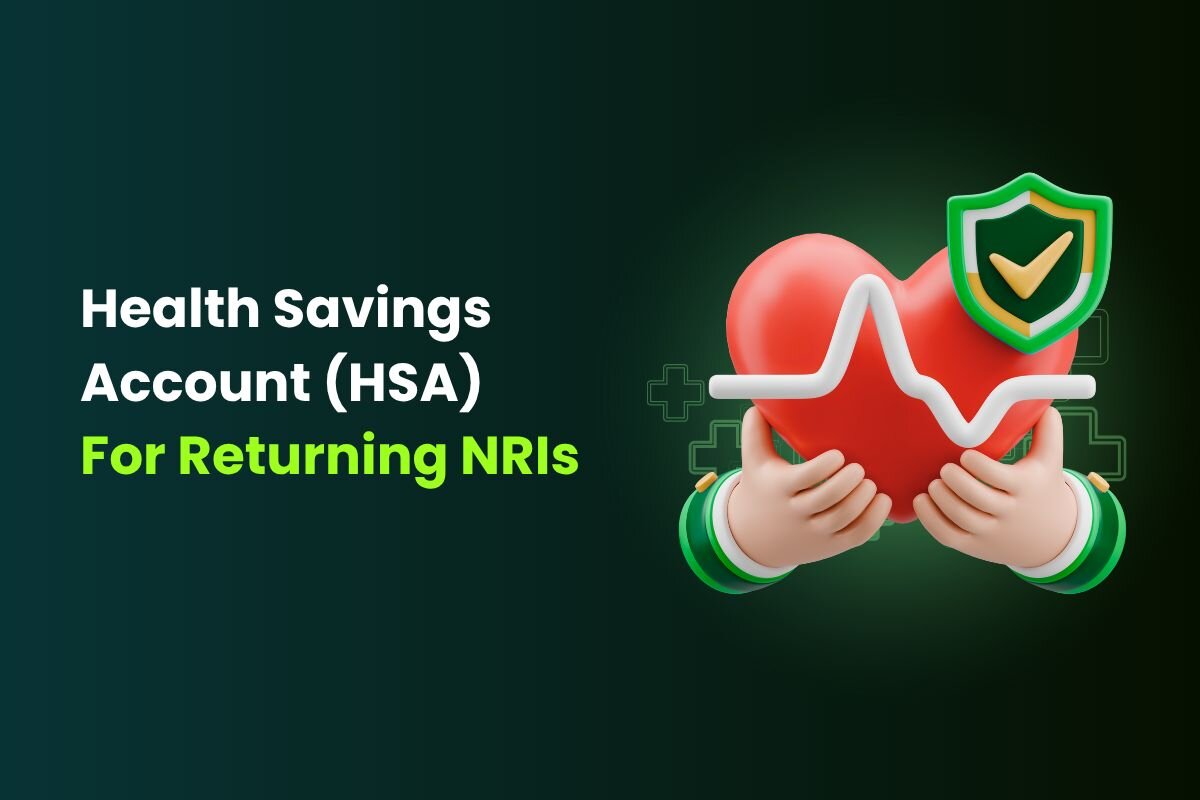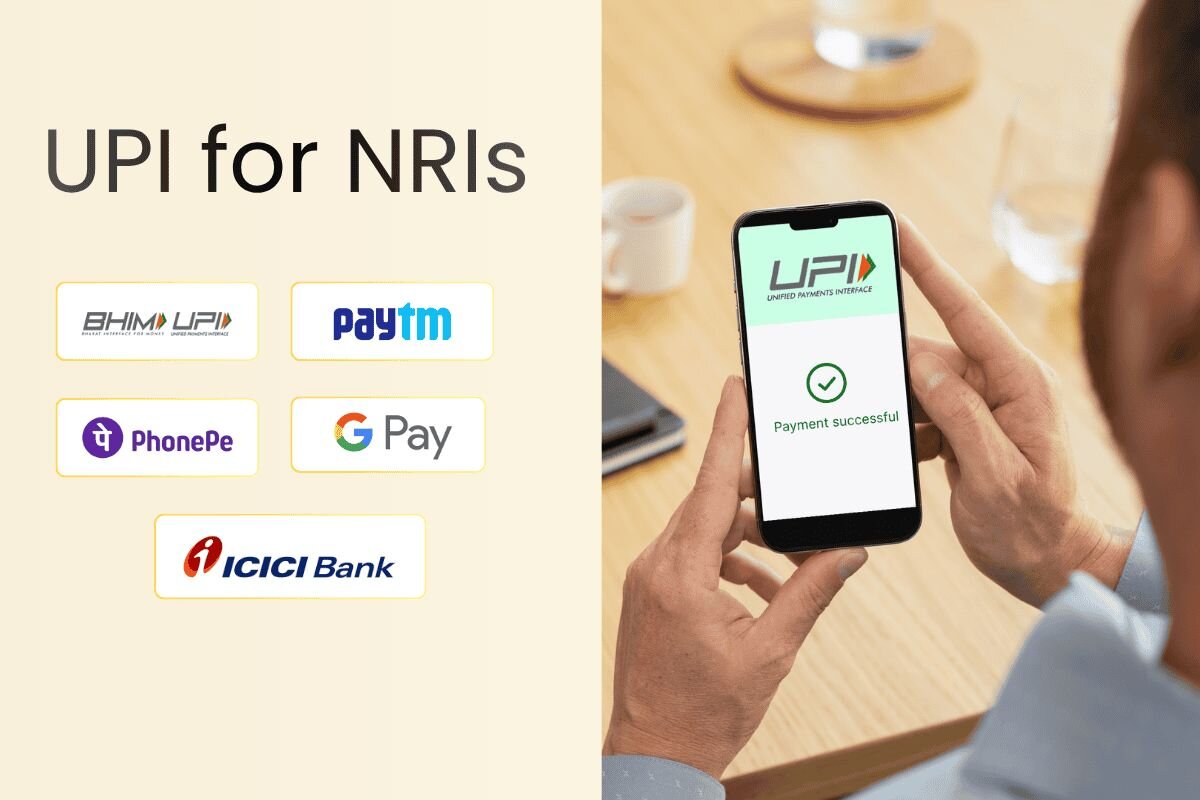NRIs can invest in Indian mutual funds with a few essentials in place: the right bank account route, up-to-date KYC and PAN, and a clean funding trail. This comprehensive guide focuses on what actually matters so you can start and manage SIPs or lump sums from overseas with confidence, optimizing your NRI investment strategy for long-term wealth creation.
We'll also flag important caveats like limited availability for US or Canada residents at some asset management companies (AMCs), Power of Attorney (PoA) execution rules that vary by country, and practical steps for repatriation and taxes, including capital gains tax considerations.
Key Takeaway
What you'll learn in this guide to enhance your NRI mutual fund investment:
- How to choose between Non-Resident External (NRE), Non-Resident Ordinary (NRO), or Foreign Currency Non-Resident (FCNR) accounts.
- Finish PAN, NRI KYC, and FATCA/CRS early. This keeps folios active and prevents SIP or redemption blocks.
- Choose where to invest: AMC, RTA, or a compliant platform all work for your investment portfolio. If you live in the US or Canada, confirm the AMC accepts NRI onboarding.
- Set up payments cleanly: SIP from NRE or NRO usually works, but some AMCs limit recurring NRE debits, so check first.
- Know your taxes: India deducts TDS and capital gains tax rules vary by fund type and holding period. US taxpayers should review PFIC implications.
- Plan repatriation in advance: NRE is usually simple. NRO remittance needs Form 15CA and 15CB with bank documentation.
Step 1: Decide Between NRE, NRO, or FCNR for Mutual Fund Investing
Choosing the right bank account is the foundation of how NRIs invest in Indian mutual funds. It decides how you fund purchases, set up SIPs, and repatriate redemption proceeds later.
Get this right now to avoid compliance and paperwork issues down the line.
Difference between NRE, NRO, and FCNR for NRIs
- NRE (Non-Resident External) – Rupee account funded from overseas earnings; principal and interest are typically fully repatriable. Cleanest route if you plan to move money back abroad later.
- NRO (Non-Resident Ordinary) – Rupee account for India-sourced income (rent, dividends, salary earned in India). Repatriation allowed within limits and with tax clearance.
- FCNR (Foreign Currency Non-Resident) – Fixed deposit in foreign currency with an Indian bank; useful for holding USD/other currencies, not a day-to-day debit source for mutual fund buys.
Which account is best for repatriation of mutual fund gains
- Units bought with NRE/FCNR funds are generally fully repatriable on redemption, subject to routine checks.
- Units bought with NRO funds can be repatriated up to the permitted limits and usually require Form 15CA/15CB (tax clearance) before outward remittance. Always follow your bank's documented process to stay compliant.
When should NRIs open both accounts
- Open both NRE and NRO if you have income abroad and income within India. Use NRE for overseas remittances and future outward transfers; use NRO for India receipts.
- Keeping flows separated makes audits simpler, helps when you invest in Indian mutual funds, and reduces friction at redemption.
Step 2: Open an NRE or NRO Bank Account Linked to Mutual Funds
Your bank account is the engine that powers every buy, SIP, and redemption. Set it up right and the rest of your investment process for Indian mutual funds gets easier. This is the debit source for your folios and the trail regulators and banks look at during repatriation.
Documents required to open NRE/NRO account for NRIs
- Passport, valid visa or OCI
- Overseas address proof (utility bill or bank statement, typically within 3 months)
- PAN or proof of PAN application
- Recent photos, completed bank KYC forms, specimen signature
- Optional, but common: FATCA and CRS declarations at the bank stage
- If converting a resident account to NRO: bank's conversion form and updated status declaration
- Note: Attestation or notarization rules differ by country. Some banks may ask for embassy or consulate attestation. Requirements vary by bank policy.
How to link your NRE/NRO account with a mutual fund platform
- Enable net banking and keep a cancelled cheque or bank letter handy.
- While creating your folio with an AMC, RTA, or compliant platform, select NRE or NRO as the account type.
- Ensure the folio is correctly tagged as repatriable (NRE funds) or non-repatriable (most NRO flows).
- Enter account details carefully – name as per PAN/passport, IFSC, and account number.
- For SIPs, register an e-mandate or one-time mandate against this account. Can NRI invest in SIP in India? In most cases yes, through NRE or NRO. A few AMCs have operational restrictions on recurring NRE debits, so confirm with your bank or AMC before you submit.
- Do a small "penny-drop" to verify the bank account if the platform prompts it, then wait for folio confirmation.
- Keep the acknowledgement, folio number, and Consolidated Account Statement (CAS) emails in a single folder.
Next, we'll complete PAN and NRI KYC so you can place your first investment with confidence and start building your investment portfolio.
Step 3: Apply for a PAN Card or Validate Your Existing PAN
Your Permanent Account Number (PAN) is mandatory before you invest in Indian mutual funds. Get this in place now so KYC, SIP registration, and redemptions don't get stuck later, ensuring a smooth investment process.
Who needs PAN for mutual fund investing and when to update details
- NRIs and OCIs need a valid PAN to open a folio and invest in Indian mutual funds (SIP or lump sum).
- If you already have a PAN from your resident days, you don't need a "new NRI PAN." You should update contact details (overseas address, email, phone) and ensure your PAN is linked to Aadhaar if applicable/exemptions don't apply.
- Moving countries later? Keep PAN details current so your KYC and FATCA/CRS validations stay active.
How to apply from abroad or update details online
- New PAN: Indian citizens typically use Form 49A. Foreign citizens (including some OCI holders) use Form 49AA. You'll need a passport copy, recent photo, and overseas address proof.
- Updates: Use the online correction flow to change address/email/phone and to reprint if needed.
- Where to do it: Apply or update via the official Income Tax e-Filing portal (PAN services).
- Tip: Keep the exact sam
With PAN sorted, the next step is your NRI KYC. That's where you submit passport and overseas address proof, plus FATCA/CRS, so you can start your SIP or lump sum cleanly and begin your journey towards wealth creation through mutual fund investment.
Step 4: Complete KYC for NRI Mutual Fund Investing
KYC (Know Your Customer) is mandatory before you invest in Indian mutual funds. Finish this once and your folio, SIPs, and redemptions will run smoothly. This is the most common roadblock in “how to invest in Indian mutual funds,” so follow the checklist closely.
Documents checklist for NRI KYC
- Passport photo page and signature page
- Valid visa, Overseas Citizen of India (OCI) card, or equivalent residency proof
- Overseas address proof (utility bill or bank statement, usually within 3 months)
- Indian Permanent Account Number (PAN)
- Bank proof for the funding account (cancelled cheque or bank letter for NRE/NRO)
- Recent color photograph
- FATCA and Common Reporting Standard (CRS) self-declaration (often part of the KYC pack)
Tip: Keep the same name format across passport, PAN, and bank. Small mismatches cause big delays.
With KYC verified as NRI, you’re set to register a SIP or make a lump sum purchase.
Step 5: Submit FATCA and CRS Declaration
This is the global tax-residency self-declaration every NRI must complete. It tells the fund house where you’re tax-resident and the IDs tied to that country, so your folio stays active and compliant.
Do it once, then update it whenever your residency or TIN/SSN changes to avoid holds on purchases, SIPs, or redemptions.
What information you must declare and why it matters
- Tax residency (country/countries) and your Tax Identification Number (TIN/SSN).
- Personal details: name as per passport/PAN, date of birth, overseas address.
- US indicia (if any): US citizenship/green card, US place of birth, or US mailing address.
- Attestation that the details are true and you’ll update them on change.
- Without valid FATCA/CRS on file, AMCs/RTAs can restrict purchases, SIP registration, or redemption. If you’re a US/Canada-based NRI, note that some AMCs allow investments but availability is limited - check the AMC policy before applying.
Where and how to submit FATCA/CRS on AMC, RTA, or platform
You’ll usually see the FATCA/CRS form during KYC or when opening a folio. Most platforms offer an e-form + e-sign flow; some may ask for a scanned declaration.
Keep your TIN/SSN handy and ensure your address matches your KYC. For official guidance on FATCA/CRS basics, visit - AMFI’s investor resources.
When re-submission is needed after a move or status change
Re-submit FATCA/CRS if you move countries, become/cease to be a US person, change your TIN, or your KRA prompts a periodic revalidation.
Also update if your address or residency changes. This keeps your ability to invest in Indian mutual funds and run SIPs smooth, with fewer holds or document requests.
Step 6: Choose Your Investment Route – AMC, RTA, or a Compliant Platform
Your “where” matters as much as your “what.” You can buy units directly from an Asset Management Company (AMC), through a Registrar and Transfer Agent (RTA) - powered flow, or via a compliant online platform. Each route affects onboarding, service, and how easily you track folios later.
How to choose between AMC direct, RTA folio, or platform
- AMC direct: Simple and cost-efficient with direct plans, but you’ll manage each AMC separately. Some AMCs limit onboarding for US/Canada-based NRIs; always check their policy first.
- RTA-driven: One place to handle multiple AMC folios and service requests. You still invest in each scheme, but RTAs centralize statements and updates.
- Compliant platform: Single login, portfolio view, and easy SIP setup. Confirm NRI KYC support, data privacy, and repatriation tagging before you start. For foundational investor education, see AMFI’s official site.
Eligibility checks for country of residence and scheme restrictions
- US/Canada: Some AMCs allow onboarding, but availability is limited and can change. Confirm eligibility on the AMC’s policy page before applying.
- Bank source: Ensure your funding account (NRE or NRO) matches your intended repatriation status.
- KYC/FATCA/CRS: Your chosen route must support NRI KYC with overseas address and tax-residency declarations.
How to create a folio and tag it as NRE or NRO (repatriable vs non-repatriable)
- Start the account/folio creation with your chosen route and complete KYC checks.
- Add your NRE or NRO bank details and ensure the folio is tagged correctly for repatriable (NRE/FCNR funded) or non-repatriable (most NRO flows).
- Make a small initial purchase to generate the folio number; save the acknowledgement and Consolidated Account Statement (CAS).
- Add a nominee now to avoid future paperwork.
- If you reside in the US/Canada, re-confirm the AMC’s current policy before placing the order; availability is limited and subject to change.
Step 7: Set Up Your Payment Method – SIP or Lump Sum
This is where money actually moves. Register a bank mandate against your NRE or NRO account, then choose between a recurring SIP or a one-time lump sum. A clean mandate and the right dates prevent most payment failures.
When to use Systematic Investment Plan (SIP) vs lump sum
- SIP (recurring monthly/weekly): Smooths market ups and downs, automates discipline, and is easier on cash flow.
- Lump sum (one-time buy): Useful when you have a large surplus and a long horizon. If markets feel heated, consider staggering it via a short, time-bound SIP.
How to set up e-mandate or one-time mandate from NRE/NRO
- Pick the funding account: decide NRE (fully repatriable flows) or NRO (subject to limits at exit).
- Register mandate: submit e-mandate/NACH with your bank details and maximum debit limit (set it a bit higher than your planned SIP).
- Verify details: name exactly as on PAN/passport, correct IFSC and account number, same signature format.
- Choose SIP settings (if using SIP): start date, frequency, amount, and debit day. Avoid dates that clash with salary cycles or frequent travel.
- Do a small test: place a tiny purchase to generate/verify the folio and ensure the mandate triggers correctly.
Step 8: Select Your Mutual Funds and Place the First Order
You’ve set up banking, PAN, KYC, and FATCA/CRS. Now choose the schemes that fit your goals, then place a SIP or lump sum from your NRE/NRO account.
Do your research or consult a licensed advisor
There is no universal “best Indian mutual funds.” Before you invest in Indian mutual funds, read the fund’s Key Information Memorandum (KIM) and Scheme Information Document (SID), check the Risk-o-Meter, and review fees, past volatility, and suitability for your time horizon.
If you’re unsure, speak with a qualified financial advisor who understands NRI needs and taxes.
Key tax and compliance checks before you buy
- Plan option: Growth vs IDCW (dividend). IDCW is taxable when paid. Many NRIs prefer Growth for simpler tracking.
- Equity vs non-equity: Capital gains rules and TDS differ for NRIs. Check the current year’s rules before confirming.
- Source tagging: Purchases from NRE are usually tagged repatriable; NRO purchases are typically non-repatriable beyond permitted limits without extra steps.
- US/Canada note: Some AMCs allow onboarding, but availability is limited. Always verify the AMC’s latest policy first.
- US taxpayers: Indian mutual funds may be PFICs for US tax purposes. Plan filings before you buy.
Place the order and confirm everything
- Choose SIP (recurring) or lump sum. Can NRI invest in SIP in India? In most cases yes via NRE or NRO mandates, but some AMCs place operational limits on recurring NRE debits.
- Select the scheme, plan (Direct or Regular), and option (Growth or IDCW).
- Pick the debit account (NRE or NRO) and ensure the folio shows the correct repatriation tag.
- Check cut-off and expected execution date, then submit.
- Save the order acknowledgement, folio number, and your Consolidated Account Statement (CAS) email.
- Add a nominee now if you haven’t already.
Step 9: Add a Nominee and, if Needed, a Power of Attorney (PoA)
This protects your units and simplifies actions when you are away. Add a nominee now, and set up a PoA only if someone else may need to transact or handle service requests on your behalf.
Why nomination is critical for NRIs
Nomination lets your chosen person claim units if something happens to you. Regulators require investors to either add nominees or formally opt out, so do one of the two to avoid friction later.
You can review SEBI’s investor note on nomination here: SEBI – Nomination for MF/Demat.
When a PoA helps and what it covers
A PoA allows a trusted person to place transactions, sign forms, or submit service requests for your folios.
It is optional. Use it if you travel often, live in a different time zone, or want a family member to act during emergencies.
Requirements differ by country of residence and by the AMC’s internal compliance policy. Some AMCs may ask for specific wording, notarization, or consular attestation. Keep the original PoA safe.
How to add or update nomination and PoA
- Nomination: Add at folio creation or anytime later. Provide nominee name, relationship, date of birth for minors, and percentage share if multiple nominees. Keep contact details current. Submit an opt-out declaration only if you do not wish to nominate.
- PoA: Draft a limited PoA that clearly lists mutual fund actions allowed. Sign as per passport/PAN. Arrange notarization and, if required, get it attested by the local Indian mission. Submit the PoA to each AMC/RTA you use and wait for registration confirmation before relying on it.
- Good hygiene: Review nominees annually, especially after marriage, birth, relocation, or status change.
If you invest in Indian mutual funds through both NRE and NRO, make sure all related folios show the correct nominee details.
Step 10: Track, File, and Keep Details Updated
This is your ongoing maintenance. A little discipline here keeps your folios clean, taxes accurate, and repatriation smooth. Do quick monthly checks, a deeper quarterly review, and a full annual wrap-up before tax season.
What to track monthly and yearly
- Monthly: verify SIP executions, failed debits, and any folio changes. Save your Consolidated Account Statement (CAS).
- Quarterly: review allocation drift, pause or step-up SIPs, and confirm the correct repatriation tag on new purchases (NRE vs NRO).
- Yearly: download capital gains statements, dividend statements, and TDS certificates. Keep all proofs in one folder. If you invest in Indian mutual funds from both NRE and NRO, keep separate subfolders for a clean audit trail.
Tax-time checklist and repatriation basics
- India taxes: confirm capital gains treatment for equity vs non-equity, and match any TDS deducted by the fund house against your statements.
- Your resident country: claim DTAA credit where eligible and file any extra forms required for foreign assets. US taxpayers should plan for PFIC reporting before year-end.
Repatriation:
- From NRE: typically fully repatriable after routine checks.
- From NRO: usually requires a Chartered Accountant certificate Form 15CB and your Form 15CA filing, then a bank remittance request.
When to update KYC, FATCA/CRS, and documents
- Life changes: new passport, change of address, change of residency, or new tax identification number. Update KYC and FATCA/CRS so folios do not get blocked.
- Banking changes: moving SIPs to a new NRE/NRO account, name format corrections, or a mandate limit increase.
- Compliance refresh: if a KRA prompts revalidation, finish it quickly to avoid holds on purchases, SIPs, or redemptions.
Keep this step light and repeatable. A tidy records folder, timely KYC updates, and early tax prep will save hours later and make future redemptions or outward remittances far easier.
Keep this step light and repeatable. A tidy records folder, timely KYC updates, and early tax prep will save hours later and make future redemptions or outward remittances far easier.
Conclusion
You're now clear on the essentials to invest in Indian mutual funds as an NRI, from choosing NRE or NRO to completing PAN, KYC, and FATCA/CRS. Set up a simple SIP or a careful lump sum, keep documents tidy, and plan taxes and repatriation early as part of your overall investment strategy and financial planning.
If you live in the US or Canada, confirm AMC eligibility first, and get advice on PFIC before you buy. When in doubt, do thorough research or speak with a licensed advisor to ensure your investment portfolio aligns with your financial goals and risk tolerance.
Remember to stay informed about market risks, expense ratios, and the performance of your chosen funds. Regular review of your investment portfolio will help you make informed decisions and adjust your strategy as needed for long-term wealth creation.
Frequently Asked Questions
Can I invest in Indian mutual funds from the US?
Some AMCs allow US-based NRIs, but availability is limited. Check the AMC’s current policy and consider US tax implications (PFIC) before investing.
How are Indian mutual funds taxed in the US?
For most US taxpayers, Indian mutual funds are treated as PFICs. You may need Form 8621 and could face mark-to-market or excess-distribution rules. Indian TDS can often be claimed as foreign tax credit, subject to US rules.
What is the tax on mutual funds in India for NRIs?
It depends on fund type and holding period. Equity-oriented funds: STCG generally 15%; LTCG 10% above the annual threshold, plus surcharge and cess. Non-equity funds bought on or after 1 Apr 2023 are typically taxed at slab rates. AMCs deduct TDS at redemption.
Can I use my NRE account to invest in mutual funds?
Yes. Purchases via NRE are usually tagged repatriable, making future outward remittance simpler if documentation is in order.
Can an NRI invest in SIP in India?
Usually yes via NRE or NRO. Confirm any country-specific onboarding limits with the AMC before setting up the SIP.
Are SIP mandates allowed from NRE accounts?
Most AMCs and banks support them, but a few place operational restrictions on recurring NRE debits. Check with your bank and the AMC.
What is the 7-5-3-1 rule in mutual funds?
It’s not an official or SEBI-endorsed rule. It’s an internet heuristic and not a replacement for goal-based asset allocation. Use a plan based on your horizon, risk, and taxes.
Do I need to update my KYC to NRI status after moving abroad?
Yes. Update KYC with overseas address, NRE/NRO bank proof, and FATCA/CRS. Resident KYC can lead to purchase or redemption blocks.
How do I convert existing resident folios to NRI folios?
Submit a change-of-status request to the AMC/RTA with updated KYC, bank details (NRE/NRO), and FATCA/CRS. Your folios will be re-tagged; keep confirmations for records.
How do I repatriate redemption proceeds, and which forms (15CA/15CB) are required?
From NRE, funds are typically fully repatriable after routine checks. From NRO, repatriation is permitted up to USD 1 million per financial year and usually needs a CA certificate Form 15CB and your Form 15CA filing, plus the bank’s remittance form. Taxes and documentation must be in order.
About the Author

By Prakash
CEO & Founder of InvestMates
Prakash is the CEO & Founder of InvestMates, a digital wealth management platform built for the global Indian community. With leadership experience at Microsoft, HCL, and Accenture across multiple countries, he witnessed firsthand challenges of managing cross-border wealth. Drawing from his expertise in engineering, product management, and business leadership, Prakash founded InvestMates to democratize financial planning and make professional wealth management accessible, affordable, and transparent for every global Indian.




